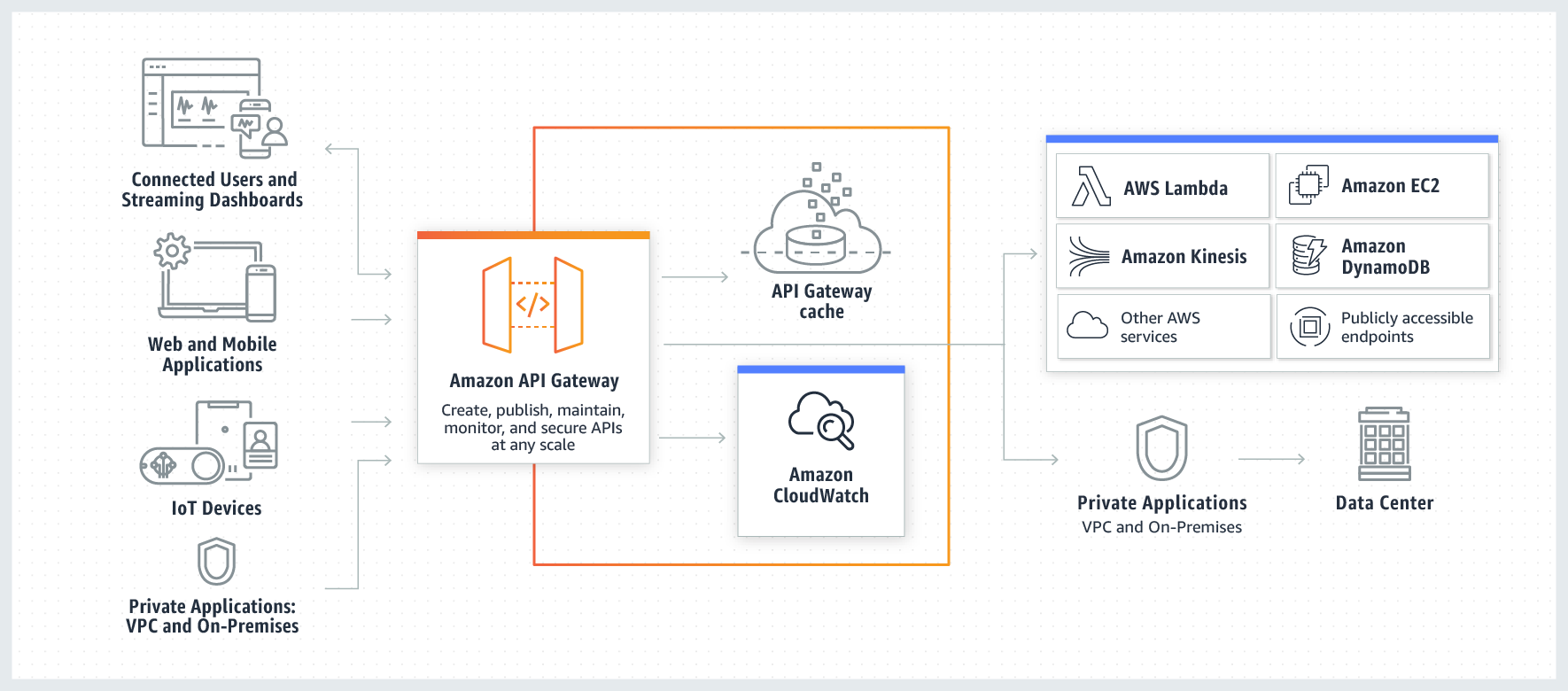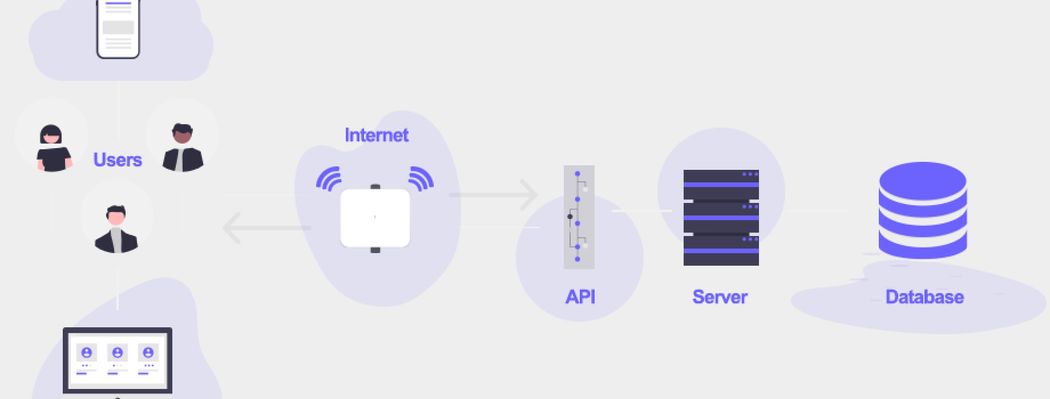Introduction
APIs have emerged as a tactical necessity for businesses. Industry changes such as the enormous growth of mobile applications that frequently talk to back ends over the web and the rapidly emerging Internet of Things, there is no denying that APIs have become a critical business resource.

Business use of API has sky-rocketed, with APIs materializing as the real power behind the digital success of major enterprises.
In terms of value, reports estimate that around $1 trillion in terms of profit are up for grabs due to the redistribution of revenues across various sectors ranging from banking and finance, media and entertainment, automation, automotive, and several others - indicating the massive potential of what is commonly dubbed as the "API economy" that continues to conquer this space!
Over the past decade, APIs have found prominence in large multinational companies' operations that intended to increase and diversify their creativity channels using the digital revolution. A significant number of SME businesses have also leveraged APIs to gain competitive capability in their domains.
So, the key question that emerges for a business owner is how do you design an API and place it at the center of your digital business platform. Firstly, you need to provide the ideal API Architecture for your developers, architects, operations, and security teams. This helps leverage what API can do for your business.
This simple guide will help you curate a state-of-the-art, clean API architecture to build the perfect, value-intensive API to suit your business's digital strategy.
Understanding APIs
API stands for Application Programming Interfaces. The emphasis here is on the interface. APIs are the doorway framework that allows software developers to interact with the application. We live in a world of interconnectedness. No mobile or web application is stand-alone; they need to interact and respond.
APIs are of utility for businesses for seven broad purposes:
- Access an application's data and logic and monetization potential of collected data
- Use an application's functionality
- Serve as a medium of communication between Microservices
- Connecting ecosystems: C2B(Consumer to Business) and B2B(Business to Business)
- Power integrations
- New features for your business
- Open new pathways for innovation and growth
From websites that require to be authenticated by our social media accounts to Customer integration to Amazon smart home appliances like Echo, which need to be triggered awake with our voice, all of them rely heavily on APIs.
Designing APIs
API design is the process of planning and architectural decisions that are taken while developing an API. As you would have guessed, it is the first step of developing an API.
The process of designing is significant because the API design impacts how developers consume it, its robustness, error-prevention, the consistency as well as vital performance metrics. Thus, API design and architecture influence users who make use of it and the revenue generated.
What is API Architecture?
As seen above, API design addresses why the API is being created, the outcome that is expected out of the API rollout, and the execution strategy for the same.
API Architecture is the process of defining the methodology and processes for developing and running the API. They consist of a set of components and a description of their logic interaction.
Based on the architectural decisions of the API being developed, the operations and security teams form more specific technical requirements for the future of the API, its tiers, API lifecycle management, and most importantly, monetization.
APIs also have several benefits for building and managing microservices. With a focussed, value-driven API strategy, businesses can expose the functionality of microservices as products, thus creating the potential for internal and external business value.
After a difficult decision of shutting down its Public API Program, Netflix created a revolutionary microservices architecture. By linking its API with the microservices architecture, Netflix scaled into the cloud, became an internationally acclaimed OTT platform, and now serves millions of consumers over a range of disparate devices.
Components of API Architecture
API Architecture, in particular, encompasses the following

1. API Gateway
This component deals with the delivery of security, caching, and orchestration specifics. Simply put, API Gateway serves as the single entry point into internal architecture. It has the following functions:
- Delivers crucial load balancing capabilities and microservices partition.
- Filter for incoming traffic from various devices — web, mobile, B2B, etc.
- Entry point layer to expose other third-party APIs, microservices, virtual machines on the provider's application server.
2. API Portal
As the name suggests, this component serves as a portal between API Consumers and API Providers. It addresses the following:
- API analysis
- API documentation
- Marketing APIs
- Compatibility with web/mobile applications
- Defining how they are exposed to internal, partner, and third-party developers
3. API Monitoring
API monitoring is not a core component of API Architecture, but it serves as an essential piece in the overall Infrastructure monitoring puzzle. If an application is running slow, you must first understand the root cause before you can correct it. The same applies to APIs. In order to know which API isn’t functioning well, you need to have a proper API monitoring system in place that monitor the health & performance of your API in real-time.
Treblle makes it super easy for Devs like you to understand what's going on with your APIs and the apps that use them.
How to design an API Architecture?
Broadly speaking, APIs serve as the link among the technologies, the user, and the enterprise. Therefore, while designing a value-intensive API for your business model, the following crucial considerations should inform API design decisions in your enterprise.
- Aligning the API design with your Business goals
- Availability and Management of business resources
- Use cases supported by your API
- Defining the Target Audience or Users
- Value creation, channels, and motivating developers to make use of the API
- The value for end-users with the applications that use the API
Google'se-book on Designing an API Product Mindset lays out the best practices for designing an API that will thrive:
- Focus on consumption and consistency
- Provide a clear statement of the value proposition the API represents to developers
- Avoid premature optimization and hide unnecessary complexity from developers
- Protecting APIs with state-of-the-art security measures
- Robust error handling
Thus, the core practices for deploying a good API design are quite straightforward: Make it simple, flexible, and easily adopted.
Goals of API Design
Each API would be tailored to meet the specific organization's needs. That said, there are some core objectives expected of the API regardless of enterprise or industry.
1. Reduce Barriers
App interactions are guided through the uniform set of protocols set by an API. It should allow for a consistent exchange of valuable resources in an organization while being transparent in its functioning.
2. Security
The IT assets of an enterprise have a certain exposure risk in the open market. APIs add a layer of security as the requests are not being directly linked to the server. This reduces the possibility of a breach or unauthorized access to the backend of a server.
3. Scalability
The common goal of all enterprises is growth. Thus, APIs help accommodate that by being expandable to meet the increase in the product portfolio, security, or data needs.
4. Collaboration
Developers can reuse software components through APIs so they avoid doing redundant and repetitive tasks. This allows them to focus on creating new tools that can add value for the company and its clients. It also allows developers to outsource more complex tasks while staying focused on the company's system.
5. Value Generation
API can be crucial to the revenue-building goals of the organization. It helps attract new customers while simultaneously bringing more value to existing ones. The software itself could be a source of revenue by monetizing its use. The software also helps integrate various functions of the business like sales and marketing to improve efficiency.
Key Architectural Styles for API Design
1. Web API
This design uses HTTP protocolto access the API over the web. RESTFUL services developed are based on HTTP using technologies such as java and ASP.NET. While the API is ideal for web browsers or web servers, it is not suitable for mobile applications. The Web API is used to provide services across multiple devices and on distributed systems.
2. Pragmatic REST
The Pragmatic Representational State Transfer (REST) is one of the most preferred designs used by internet service API developers. It is a sophisticated, Web-centric approach to designing programming interfaces. Pragmatic REST uses URI instead of WSDL and is transport-specific (it exclusively supports HTTP), has largely taken over from the Web Service style for it is intuitive. Follow this 10 REST Commandments if you want to be loved from your mobile devs.
3. Hypermedia
Hypermedia APIs are focused on URI, HTTP, and RESTful standards broadly. It is a highly web-centric API that is known for its scalability. A key benefit is that a server that hosts a hypermedia API can generate a list of potential options available to the client, which can then later be accessed easily through future HTTP requests.
4. Event-Driven
Event-Driven APIs are the most favored APIs for the Internet of Things devices, mobile applications particularly, messaging, video chats, and games. The main point of difference between Event-Driven APIs and the other designs is that other systems function in a way that either the client or the server is designated as the actor whereas the other party is designated as the one being acted upon. Event-Driven design, on the other hand, requires both client and server to listen to new events and respond. Being a server-initiated user-centric style, it delivers better performance where a huge number of small messages need to be passed between the app and the back-end processes.
Layers of API Architecture
1. Information Management Layer
This layer functions as a data storage center. APIs need to deliver real-time inventory for which a steady, accurate and reliable database is required. The Information Management Layer does just this.
2. Application Layer/Microservices
Traditionally, this layer housed applications that run the organization. However, with the advent of modern-day web applications, they are being replaced by Microservices architecture that possesses immense business value for the organization.
3. Integration Layer
This layer facilitates API integration for synchronous access to various services across disparate devices and users.
4. Interaction Layer
This is perhaps the most important of all layers as this is the place where the real action occurs. The applications of customers, developers, and other users interact with your business applications and data in this layer.
Conclusion
Thus, an API is adopted by users when it delivers a strong value proposition. However, crucial design and architectural factors as discussed in this guide should inform key decisions of developing the API that is perfect for your Business' needs.






